Rebuilding Trust in Science and Protecting Resources: Thomas More University Biology Field Station
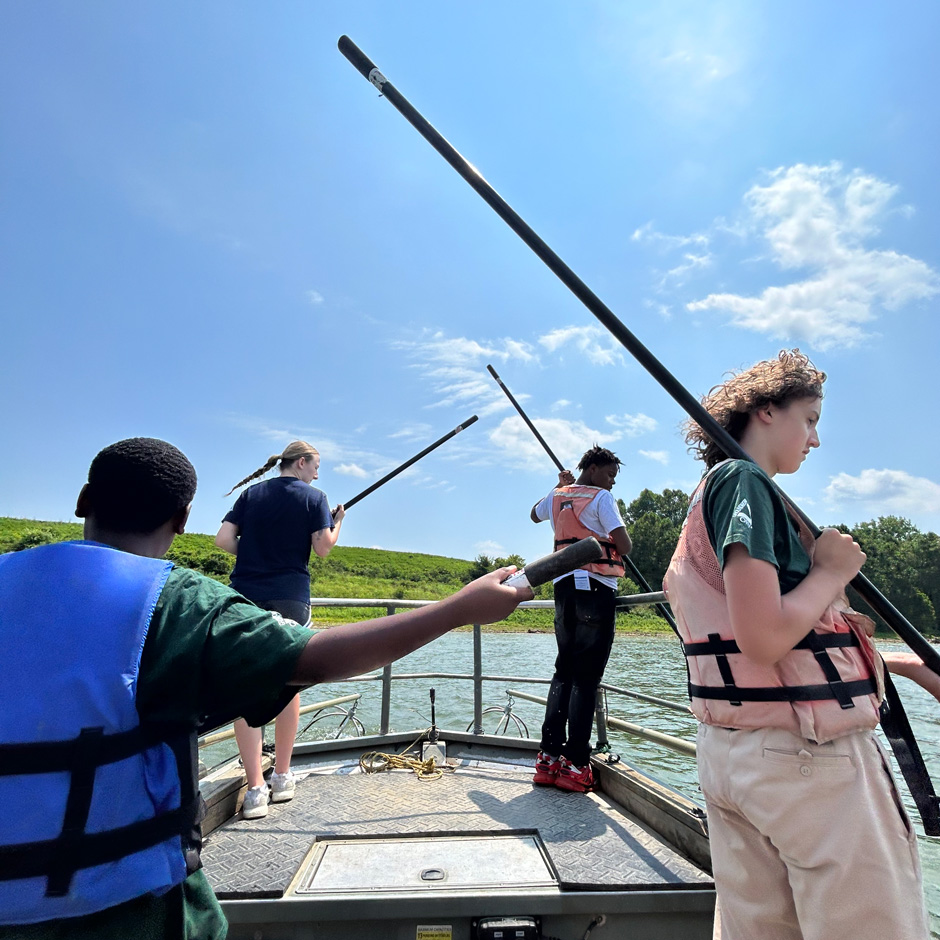 Biology Field Station field trip participants electrofish on the Ohio River. (Paola Canales / Universidad del Sagrado Corazón)
Biology Field Station field trip participants electrofish on the Ohio River. (Paola Canales / Universidad del Sagrado Corazón)Many universities and environmental organizations have field stations where monitoring equipment is deployed, and various environmental restoration initiatives are conducted. One example is the Thomas More University Biology Field Station.
The Field Station is managed by a team of students, faculty, and staff who facilitate ongoing restoration and monitoring programs. Molly Williams is the Station Manager of the facility and spends her days overseeing various research projects, internships, and outreach initiatives.
Having been an intern with the Field Station in 2021, Williams was excited to return as the Field Station Manager in 2023. Williams’ initial time at the Field Station as an intern confirmed her decision to switch from a pre-med track to the field of ecology.
She explains the internship, “I had an incredible summer. I was working on our fish bioassessment of the Ohio River, where we’re surveying fish populations to measure health of the biological communities and document long-term trends in water quality of the Ohio River [. . .] I realized I loved fieldwork, and I also gained experience in STEM outreach, which I really enjoyed.”
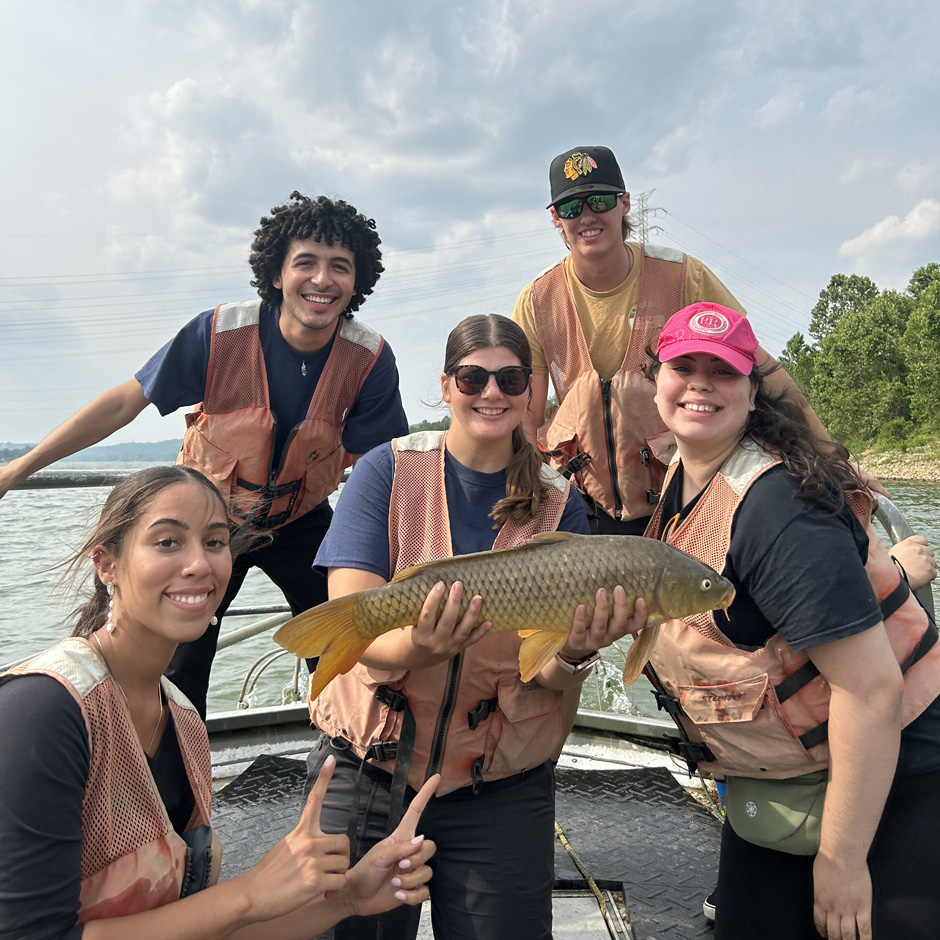
Field Station interns receive electrofishing training on the Ohio River. (Chris Lorentz / TMU Biology Field Station)
Meeting Academic and Environmental Needs
The work of the Field Station is divided into four primary areas, all of which are managed by Williams, Station Manager, Chris Lorentz, Director, and their team of students.
- Research:
- Conservation of aquatic species, particularly threatened and endangered species
- Bioassessments of aquatic ecosystems
- Source water protection
- Education: Developing the next generation of scientists
- Outreach: Teaching science to K-12 schools and the general public
Regarding threatened & endangered species conservation, the Field Station works primarily with the Eastern hellbender and freshwater mussels. The mussel program has been particularly successful. For example, over 5000 juvenile sheepnose mussels were propagated at the Field Station and then released into the wild. Further, new fish hosts have been identified for mussel species.
Williams is hopeful to establish a “Hellbender Head Start program” that might be equally successful in the future. For now, the program is mostly focused on mastering hellbender husbandry and building a network with other organizations involved in the conservation of the charismatic species.
The Field Station also assists with the Ohio River Valley Water Sanitation Commission’s (ORSANCO) source water protection program, namely the Organics Detection Spill Network. Positioned just upstream of Cincinnati, the Station is in a strategic location to work with both the Greater Cincinnati Water Works and the Northern Kentucky Water District to monitor the river above the intake for both utilities.
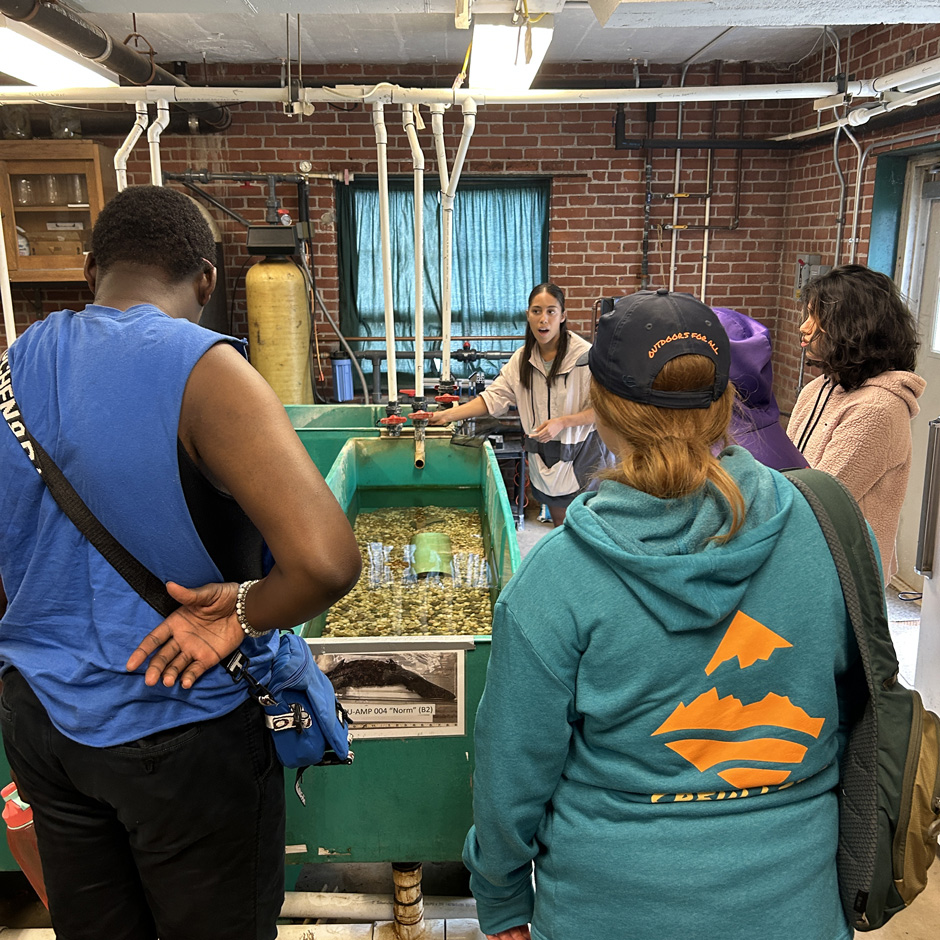
Field Station intern Paola Canales introduces visitors to the eastern hellbender (Cryptobranchus alleganiensis). (Molly Williams / TMU Biology Field Station)
Thomas More houses and operates water quality monitoring equipment and communicates with its collaborators to better inform intake and treatment decisions for the region. Undergraduate student interns assist in all operations of source water protection to gain valuable experience in the environmental industry.
Familiar with the impact the Field Station had on her own career, Williams is a strong advocate for work experience programs that support the development of the next generation of environmental professionals.
She expands, “We have undergraduate students work in our labs throughout the school year, we have labs for Thomas More University classes held at the Field Station—and many of our former interns have gone on to work for federal and state agencies, academia, and nonprofits. We are honored to play a hand in forming the next generation of scientists.”
The final pillar in the Field Station’s operations is outreach and translating their work to the public. “Since COVID, the public’s trust in science and scientists has decreased significantly. So, we emphasize in our outreach programs, both for K-12 students and the general public, the importance of science to the community as we aim to improve scientific literacy,” elaborates Williams.
She continues, “[We want to] make people aware of conservation issues. As a group, freshwater mussels are arguably the most endangered group of animals in the world—and yet so many people have never heard of them!”
Tours and various community days allow Williams and the Field Station team to work with the public and share the many ongoing initiatives at the Station. The goal of the program is to make science—and more specifically—freshwater ecology, more accessible to the public and raise awareness of the importance of aquatic ecosystems.
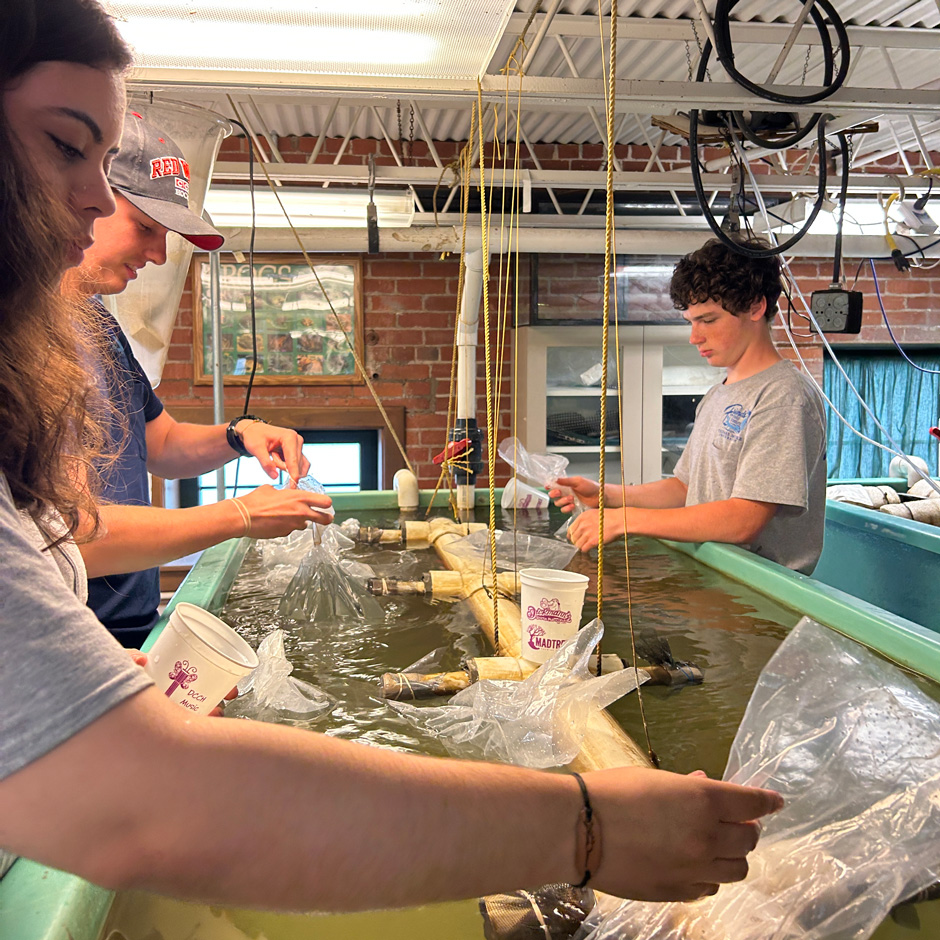
Thomas More University Biology Field Station interns acclimate fathead minnows (Pimephales promelas) to an Ohio River water tank. (Molly Williams / TMU Biology Field Station)
Community Outreach, Collaborators, and Environmental Monitoring at the Thomas More Field Station
While the outreach programs can be challenging, Williams believes it to be one of the more important aspects of her work given the lack of public understanding regarding endangered species and environmental protection.
Despite hellbenders and some local freshwater mussel species being threatened or endangered, public knowledge of the two is limited, particularly the role of human-caused stressors in the degradation of their habitats. Williams highlights urbanization, fracking, and acid mine drainage as being common threats.
Even source water monitoring is made more difficult due to a lack of investment from the public. Chemical spills like the East Palestine derailment, combined sewer overflows, and nonpoint source runoff are major threats to source water and require the implementation of 24/7 monitoring networks to ensure that water quality standards are met.
A majority of the monitoring conducted by the Field Station uses real-time equipment, but discrete sampling methods are also used. For example, their ongoing fish bioassessment involves daily discrete sampling at two sites near coal-burning power plants.
The real-time systems are used primarily to monitor water quality for their conservation work and ORSANCO’s source water protection program. Two YSI sondes are deployed, one in the tanks where the Field Station conducts mussel-fish host research, and the other is used to monitor drinking water. In addition, a multiparameter weather station simultaneously collects meteorological data that can be paired with water quality data to observe trends.
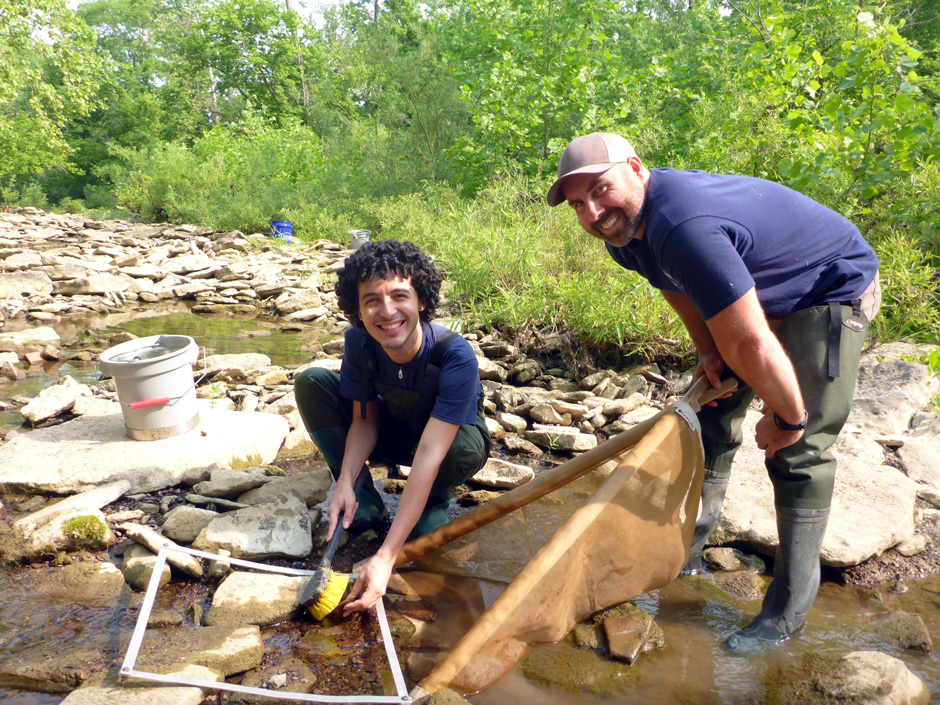
Intern Matteo Ortiz sampling macroinvertebrates in an Ohio River tributary. (Liz Fet / Sanitation District No. 1)
The sondes gather conductivity, pH, temperature, and dissolved oxygen data, which is then transferred to the cloud, where Williams and other members of the team monitor water quality remotely via WQData LIVE. Online visibility allows easy data comparison and immediate real-time access, which is particularly important for the source water sonde since resource managers rely on the data to inform treatment plans.
Williams explains, “It helps the drinking water utility companies, especially because we’re located so strategically, just upstream of Cincinnati and directly on the river. [The instruments make] their sampling significantly easier by deploying a probe at our site that’s constantly monitoring Ohio River water.” She continues, “It is also just helpful to know that we have that data at our fingertips anytime we need it.”
Conclusion
Williams says that one of the most rewarding parts of her work has been the partnerships forged with local collaborators. “We do so much collaboration, the capacity and potential of the Field Station is much greater with our partners. It has been incredible to see how many different organizations are so passionately working to protect the Ohio River, its watershed, its tributaries, and the species that are native to our region,” states Williams.
Being able to play a role in the development of future scientists has also been rewarding for Williams, having been an intern with the Thomas More Field Station previously.
She explains, “I served as an intern here and I know how influential it was to my career and my development as a scientist and researcher. So it has been really rewarding to be able to help mentor my first round of interns this past summer and stay in touch and see what they’re doing—really see how they’re continuing to use the momentum they gained this summer to continue forward into their own careers.”
The Thomas More Field Station hosts a variety of environmental monitoring initiatives and plays an active role in endangered species restoration, source water protection, STEM opportunities for students, and scientific outreach for the community.
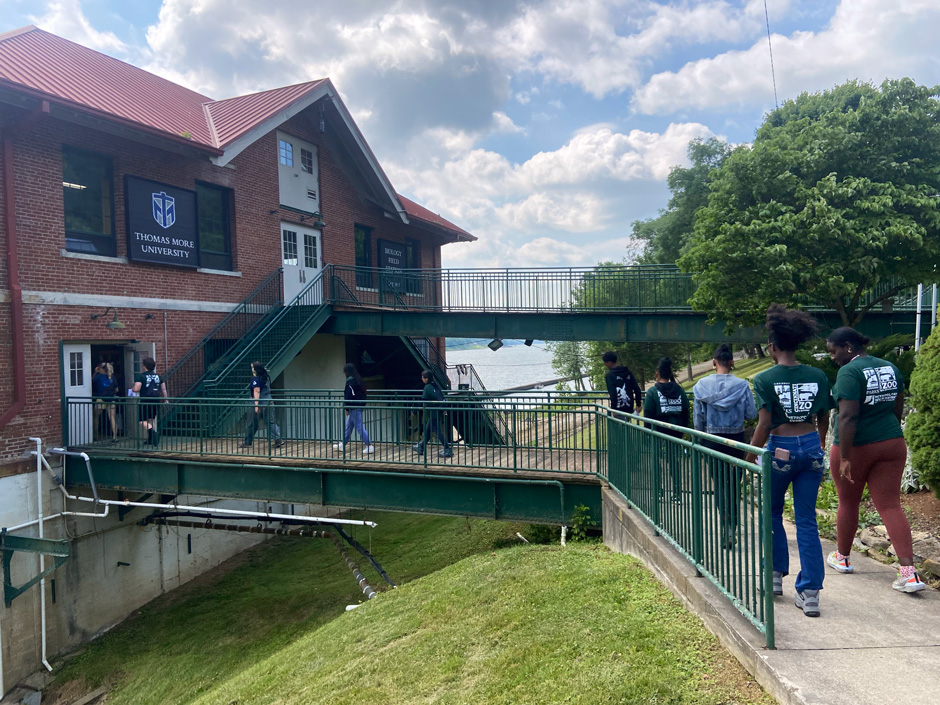
Field trip participants enter the lab building, a renovated U.S. Lockhouse, to tour the facility. (Jonathan Miller / Thomas More University)




0 comments